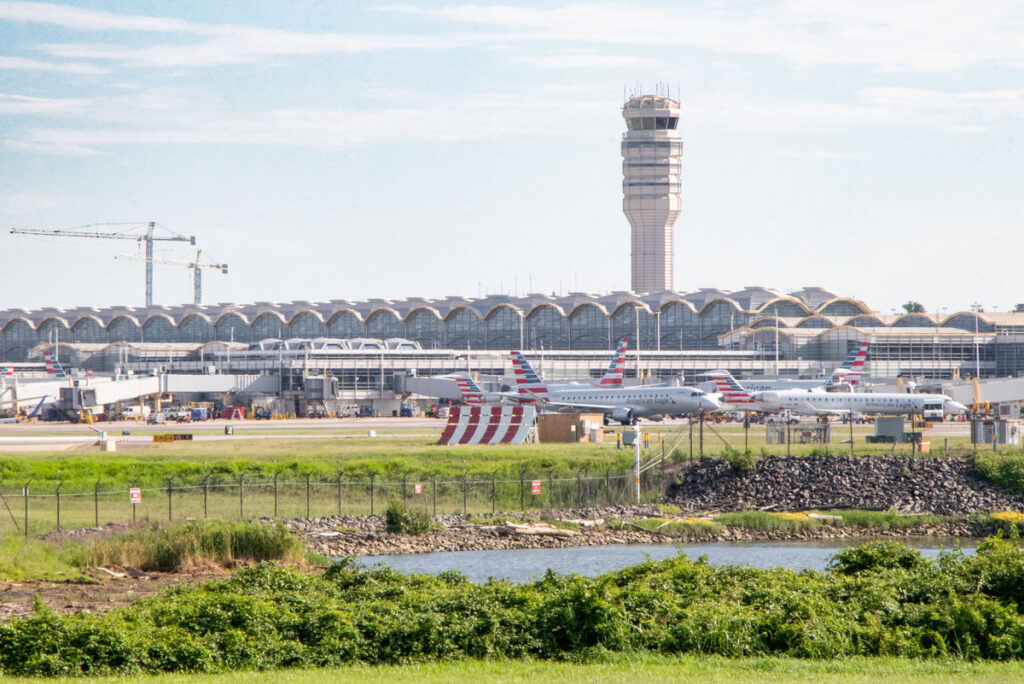
The Black Hawk Army Helicopter that collided with an American Airlines regional jet over Washington, D.C., in January was flying at the incorrect altitude, according to new findings from the National Transportation Safety Board (NTSB).
The NTSB began presenting information from its investigation into the crash on Wednesday at the first day of hearings for federal lawmakers in Washington.
An instrument on the helicopter called an altimeter, which provides altitude readings, provided incorrect information to the pilots, the NTSB said in the hearing. After testing more Black Hawk helicopters, the NTSB discovered that readings from the Army’s helicopter altimeters could be more than 100 feet off. The pilots operating the Black Hawk that collided with the passenger plane in January were flying above the 200-foot altitude limit set for helicopters along the Potomac River. Investigators also found that the helicopter was actually 80 to 100 feet higher than the reading on their altimeter showed.
Army officials who testified during the hearing tried to downplay the altimeter discrepancies, saying that readings with a margin of error within 100 feet were acceptable because their pilots’ goal is to maintain altitude within 100 feet of a certain limit, according to the AP. Also revealed during the hearing was the Black Hawk altimeters are a piece of equipment from the 1970s, and newer technology can give much more accurate readings.
Many of the lawmakers seemed to find this explanation unacceptable. “The NTSB hearing revealed the conflicts on the DCA helicopter routes were so clear that an air traffic control working group suggested changing them,” said Senator Maria Cantwell, ranking member on the Senate Commerce, Science, and Transportation Committee, in a statement on X. “What caused the FAA’s oversight to be so flawed that they couldn’t fix this problem before this tragedy occurred? It also shows the Army helicopter altimeters were off by over 100 feet—pilots couldn’t follow altitude restrictions even when trying to.”
The hearing also called the helicopter’s flight paths into question. Some helicopter pilots testified that they didn’t think air traffic controllers in the D.C. area would ever allow them to fly beneath a landing plane, while others told investigators that crossing a passenger plane’s flight path was something they’d been allowed to do before.
There were 85 near misses at Ronald Reagan National Airport (DCA) in the three years preceding the collision. Air traffic controllers had also raised concerns about the potential issues of helicopter traffic in the area for years, but those complaints were buried in bureaucracy, according to NTSB Chairwoman Jennifer Homendy. “I mean we heard it in the testimony today: ‘Oh you could bring it up in another symposium or another group, or you could take this option or we said no.’ But then I asked did you provide an alternative? That’s why people are so critical of the federal government because you can’t ensure safety,” Homendy said after the hearing, according to the AP.
The investigative hearing is scheduled to continue on Thursday in Washington. Senator Ted Cruz, who is the chairman of the Senate Commerce, Science, and Transportation Committe, has proposed legislation to change policies around how aircraft broadcast location data to other planes and air traffic controllers. The NTSB won’t file its final report on the crash, which killed 67 people, until sometime in 2026.
For the latest travel news, updates and deals, subscribe to the daily TravelPulse newsletter.

